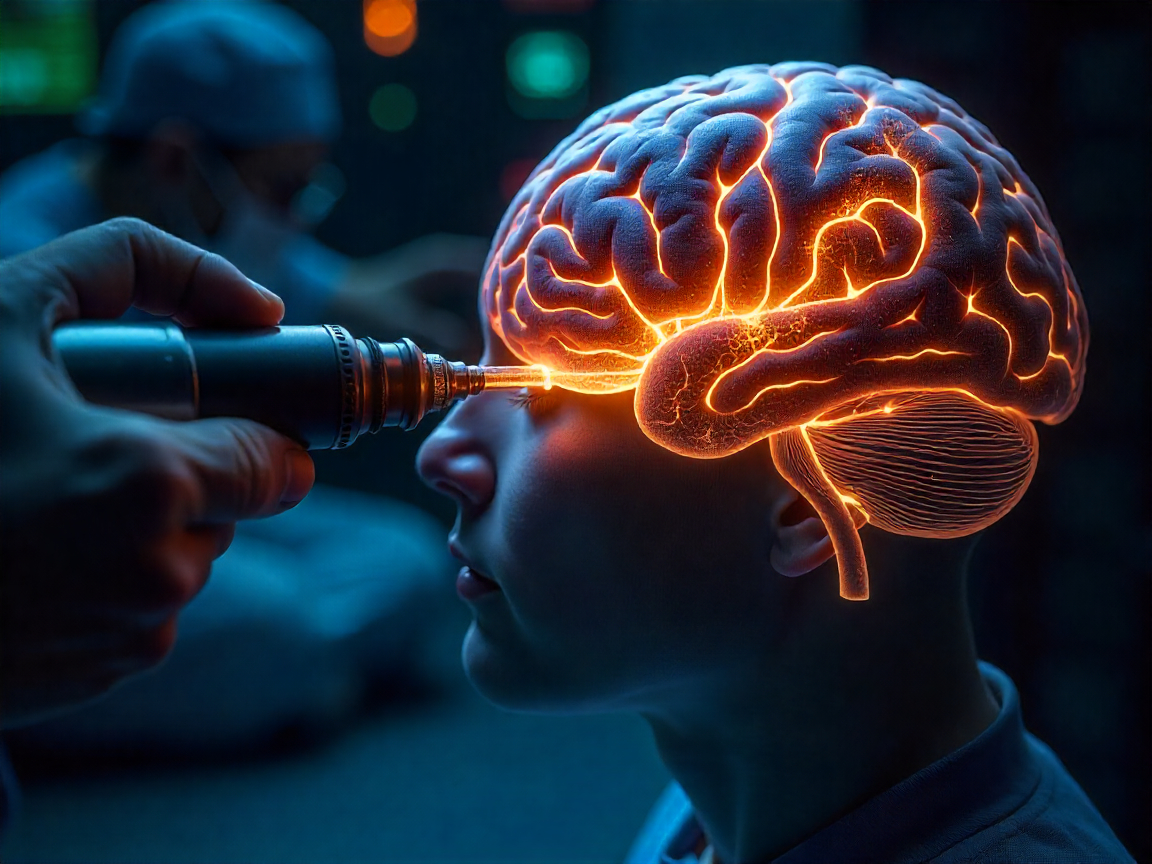
The New Day in Medicine
Consider the possibility of living in a world where such diseases such as Huntington s disease or ALS will not only be treated through symptoms management- but through rewriting of the disease associated genes themselves within the brain. It has become a realizable future. Researchers have achieved great success in editing human brain cells in a living organism, a historic moment in the world of medicine, and CRISPR was used during the process.
This is not lab experiment. A true-to-life patient, probably a child with a fatal neurodegenerative disorder, got an injection of NASA-CRISPR straight into their head, and the early results were encouraging, as there were promising edits to the malfunctioning neurons. The implications? Millions of people with genetic brain diseases can now look forward to genetic brain disorder cure. Such power, however, comes with certain moral imperatives- to interfere with the human brain or not? Who will be first in line? What to do in case something goes wrong?
How CRISPR Entered the Brain: Breaking the Final Frontier
Delivery was the greatest limitation of CRISPR over the years. The blood-brain barrier is a virtually impermeable vessel that acts as protection to the brain and prevents passage of most drugs and genetic tools. Somehow, scientists needed to deliver CRISPR into the neurons itself; the solution they found was microscopic “Trojan horses”: harmless viruses (AAVs) that could carry CRISPR inside the neurons.
It reminded me of sci-fi: using a injection, a specific CRISPR is loaded into diseased brain sites where they cut out the problem genes and insert good genes in the place of the bad. One of the earliest experiments targeted Tay-Sachs disease, an inhuman disorder characterized by motility loss and practically none of these children survive beyond the age of five. Assuming that this is effective, it would put a stop to the disease.
But why cannot this be done in CRISPR treatments in the past?
- Cells that edited outside the body (such as sickle cell therapy) were done successfully in the past.
- It is also the first time CRISPR has been used in a live brain-fraught, but groundbreaking.
The First Patient: A Glimpse Into the Future of Medicine
Although the identity of the patient is a secret, reports indicate the patient was a five year old who had a rare, lethal, genetic disorder. The scientists injected CRISPR into the brain through an application of the MRI-guided surgery, which is typically devastated by neurodegenerative disorders termed the thalamus.
One of the neurogeneticists, Dr. Sarah Zhang, who participated in the trial, said:
“we stopped and breathed. It was almost a miracle when the modified cells came out normal when the first neural scans were made. But we remain in uncharted waters–long range effects are not known.”
It is not only concerning a single kid. Rare genetic disorders occur in over 300 million individuals and many of these disorders influence the brain. Should it be scalable, it would eliminate such diseases as Alzheimer, Parkinson as well as some cancerous brain tumors.
Ethical Whiplash: The Double-Edged Sword of Brain Editing
There is so much might, there is in a lot of controversy. Is this going to result in designer brains? Bioethicists caution that it will be impossible to resist the urge to make someone more intelligent or more likely to remember something once we perfect neural gene editing because there will be no reason to stop there.
As an example, in 2023 one biotech startup was closed due to adverting “CRISPR cognitive boosts” at unregulated clinics. The FDA has since made it stricter but the cat is out of the bag.
Ethics:
- Who will have it first? The existing treatment expenses may cost more than $2 million per patient.
- Is it ethical to modify the embryos to avoid brain disorders? The memory of the CRISPR baby scandal that happened in China in 2018 still haunts.)
- What will happen in the event of edits run amok? Well, neurons do not regenerate like skin or liver cells, (Unlike skin or liver cells, neurons do not regenerate).
The Road Ahead: Cures, Capitalism, and Caution
Big pharma has already spent billions. The neuro-editing initiative funded by Vertex Pharmaceuticals, the first company to use CRISPR sickle cell therapy, has just received 900 million dollars. In the meantime, patient activists are pressing the drug companies to make the medicine affordable–“A cure must be an affordable cure,” says one mother whose son has Batten disease.
Expert take:
“Dr. James Wilson, one of the pioneers in gene therapy, describes this as what happened in the early days of organ transplants. Initially, it was termed Frankenstein science by the people. It is commonplace now. Brain editing might do the same and it will all depend on how we approach it–according to caution.”
Final Thought: Are We Playing God—Or Saving Lives?
CRISPR brain editing also makes us wrestle with an unpleasant fact: Medicine is no longer only about healing but becomes a means of reprogramming human biology. There is an increasing gray area between therapy and enhancement.
Where, then does it end? Is it right to edit brains to heal? Absolutely. However, this is a new world, and the question we have to ask ourselves is whether or not the fact that we can do something means that we should?
It is not that easy to answer. One thing is definite though, the neuroscience of the future just transformed itself.